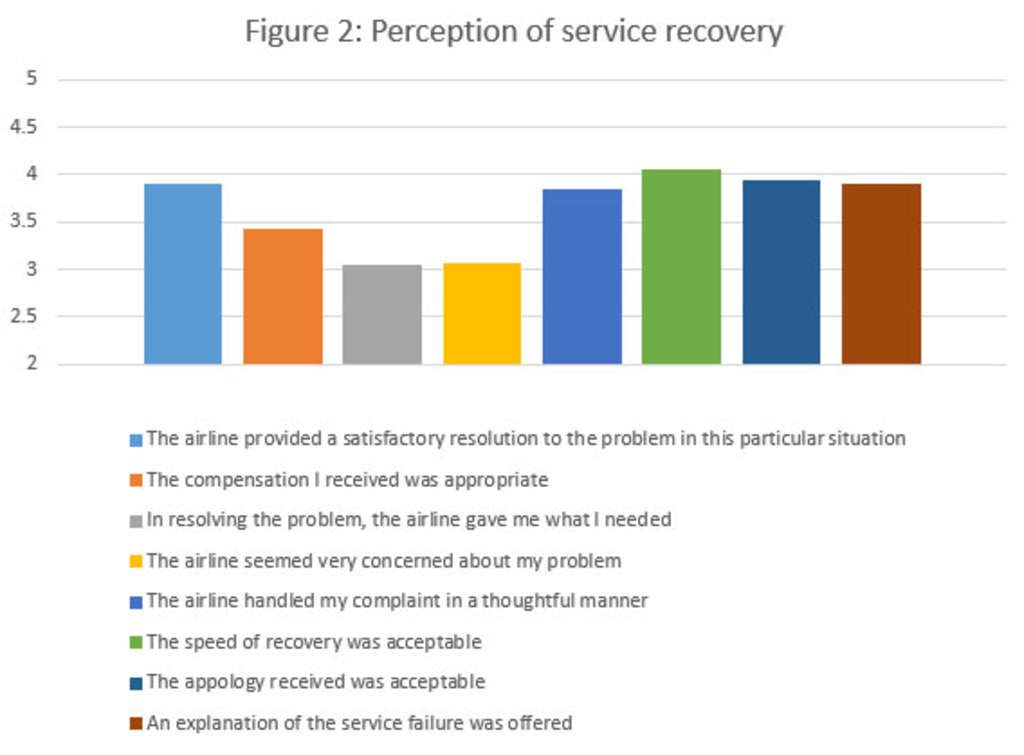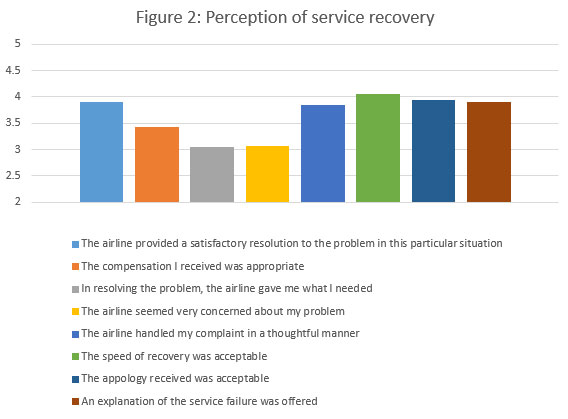Service Recovery in the Airline Industry
By setting performance standards, communicating the importance of service recovery, educating customers to make complaints and implementing technological support - airlines can minimize passenger’s betrayal, and strengthen relationships with passengers.

Led by the team of Associate Professor Dr. Reza Etemad-Sajadi, this research assesses the impact of airline passengers' perception of service recovery on their satisfaction and loyalty. The aim is to investigate and identify the direct and indirect effects of service recovery (output and process) on airline passenger loyalty.
From a customer's perspective, a service failure refers to something that went wrong in dealing with the business or to a real or perceived service-related problem. Essentially, this means that the expectations of the customers have not been met.
With this in mind, service recovery is the decision a company takes in reaction to service failure, with the aim of changing the dissatisfaction of the costumer to satisfaction and eventually retaining these clients.
If it is unlikely that organizations can eliminate service failures, they can learn how to effectively deal with these failures, maintaining and enhancing their customers' satisfaction. Indeed, several touchpoints are not controllable by the airline companies, but the airline is in charge of communicating the problems or delays that can occur while in the airport.
What is service recovery and why is it so important for airlines?
The airline industry is particularly exposed to service failures. A number of reasons lead to such issues, including flight cancellations, overbooking, strikes, diversions, delays, the attitude of the ground or cabin employees, or reservation problems. Unsurprisingly, the most frequent reasons for complaining are problems due to flight delay, problems with the luggage, overbooking of the aircraft, and flight cancellation.
'In this study, it was found that delayed flights alone account for 37% of dissatisfaction.'
Some 17% of respondents experienced a problem due to a luggage complaint, followed by 9% with a problem due to overbooking, 9% with a problem due to flight cancellation, and 5% with other problems (e.g., check-in, seat assignment or post-flight assistance). Specifically, it is the lack of information that was given about these failures that caused the dissatisfaction.
However, service failures offer an opportunity for service recovery, resulting in turning unsatisfied customers into loyal ones. For airlines, this means effectively minimizing passenger betrayal and strengthening the relationship with their clients.
'The greatest challenge to effective service recovery is that only 5% to 10% of dissatisfied customers choose to complain following a service failure. The 90% to 95% remaining switch silently to competition or tarnish the company's reputation by word of mouth.'
Therefore, it is the airlines' job to set performance standards, communicate the importance of service recovery, educate customers to make complaints and implement technological support, such as call centers and internet solutions.
Service guarantees encourage customers to complain as they affect customers' perceptions of reliability, but are tenable only when the company is already focused on service quality.
Empowering employees
is a powerful tool for effective service recovery as the workforce will be able to think for themselves and make decisions on their own for the benefit of the firm's customers.
Successful recovery strategies include taking responsibility, a quick reaction and response by a senior employee, a fast response accompanied by a full refund plus some amount of compensation or a large amount of compensation provided by a high-ranking manager.
A successful recovery strategy leads to a win-win situation for both the customer and the company, as the passenger is satisfied and remains loyal to the airline.
What is more important: the correction process or compensatory efforts?
The output
quality of the service recovery concerns the concrete resolution of the problem.
The process quality of the service recovery concerns the procedure including the response speed, employees' explanations, empathy, etc.
As can be seen in figure 1, the service recovery process was perceived in a more favorable light than service recovery output.
Figure 2 shows the descriptive statistics about passengers' perception of the service recovery. In general, we observe that clients were not satisfied with the way in which the service was recovered. Indeed, all means are between 3.05 and 4.05 (scale from 1 to 7).
Figure 3 demonstrates that the "output" was more important than the "process" of the recovery. In other words, the "output" of the service recovery impacts more customer satisfaction than the "process". Nevertheless, the perception of the performance of the "output" was less favorable compared to the "process".
Airline passengers are often confronted with service failures such as flight delays or cancellations. Service failures are considered to be a likely occurrence over a service lifetime. However, maintaining customer satisfaction and loyalty means effectively handling these unfortunate circumstances.
Service recovery should therefore be a foundation for any successful business, as a well-handled service recovery has a strong impact on customer loyalty.
A good service recovery strategy implies constant costs. Moreover, ongoing staff training is vital in order to implement such strategies. It is important to bear in mind that the recovery process aims not only to remove dissatisfaction but more importantly to improve satisfaction.
Airlines, as with other industries, can identify points of failure by making a monthly or quarterly comparison of results and examining the main complaints during these periods. It is essential for companies to use this information wisely in order to improve the customers' experience in an effective manner.
Airlines can put in place an effective program that is designed to engage staff at all levels. For example, American Airways created a Learning Map module that aimed to provide staff with reliable service recovery techniques.
Customers' journey mapping can also be implemented by carriers to truly understand the feelings of passengers and the corresponding service solutions. Through a customer journey mapping connected to the internal customer relationship management (CRM) system, companies can recognize specific breakdowns during each touch point and identify the feelings/reactions of each type of traveler - business, leisure, families with kids, etc. Based on this, they can provide concrete solutions that are tailored to each situation.
A good service recovery strategy is crucial! We even talk about the service recovery paradox. It is a situation in which a passenger is positively surprised by the way that the company has corrected/resolved a service problem. The paradox comes from the fact that the customer is even more loyal than if no failure had occurred in the first place.
Access the full study:
Etemad-Sajadi, R., Bohrer, L. (2019). The impact of service recovery output/ process on customer satisfaction and loyalty: the case of the airline industry. Tourism and Hospitality Research, 19(2), pp. 259-266.
EHL Hospitality Business School
Communications Department
+41 21 785 1354
EHL







